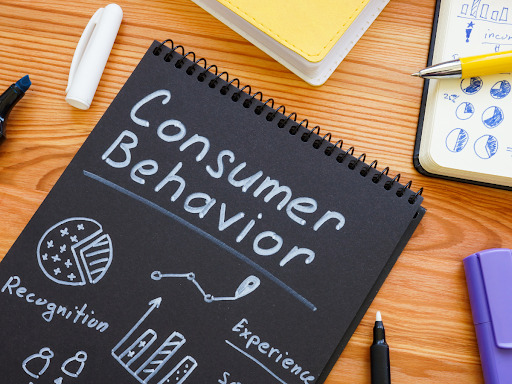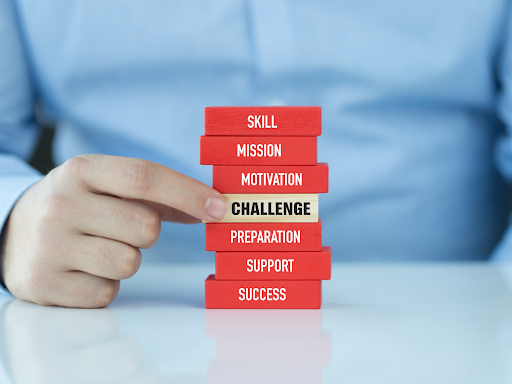The COVID-19 pandemic has brought about a seismic shift in the realms of Design and Innovation in the post-COVID era. This blog post will delve into the lasting effects of the pandemic on design and innovation, with a particular focus on remote collaboration and changing consumer behaviors. These changes have reshaped the way we think about Design and Innovation in the post-COVID era, paving the way for new opportunities and challenges.
The Rise of Virtual Design and Innovation Teams
One of the most significant changes has been the rise of virtual teams, a hallmark of Design and Innovation in the post-COVID era. Design and innovation professionals have adapted to collaborating across geographic boundaries, creating diverse teams that transcend traditional office structures. This shift has broadened access to talent, allowing organizations to tap into global design and innovation expertise.
The Design and Innovation in the post-COVID era is no longer confined by physical boundaries. This era sees teams collaborating seamlessly, bringing together experts from different parts of the world. This paradigm shift in team dynamics has not only enhanced the diversity of perspectives but has also enabled a 24/7 work culture, ensuring that innovation never sleeps.
Enhanced Flexibility
Design and Innovation in the post-COVID era is characterized by enhanced flexibility. Remote collaboration has given professionals in these fields more flexibility in their work. This flexibility not only boosts productivity but also provides a better work-life balance for many. Teams can now work from various locations, adapting their work hours to suit their individual preferences.
The concept of the traditional 9-to-5 workday has become somewhat obsolete in Design and Innovation in the post-COVID era. With remote work, professionals can design their work schedules to suit their most productive hours. This shift in work dynamics empowers individuals to balance their personal lives with work commitments more effectively, ultimately leading to improved creativity and innovation.
New Tools and Technologies
The pandemic accelerated the development and adoption of digital tools and technologies that facilitate remote collaboration, a cornerstone of Design and Innovation in the post-COVID era. Video conferencing, project management software, and augmented reality have become indispensable in the design and innovation process. These tools have helped bridge the gap between remote and in-person work, enabling more efficient and effective collaboration.
In the Design and Innovation in the Post-COVID Era, technology has emerged as a driving force behind progress. The tools and platforms designed for remote collaboration have not only improved efficiency, they have also paved the way for innovation. Remote design thinking workshops, 3D modeling software, and real-time feedback platforms have transformed the way professionals work, making it easier than ever to iterate and improve designs rapidly.
Real-life Example
COVID-19 forced Nike to close its design studios and innovation labs, which made it difficult for its teams to collaborate and create new products.
Solution: Nike adopted several strategies to build virtual design and innovation teams, including:
- Using collaborative software tools: Nike invested in cloud-based software tools that allowed its designers and engineers to work together remotely. This included tools like Figma for design, Slack for communication, and Azure DevOps for project management.
- Creating virtual design studios: Nike set up virtual design studios in its employees’ homes. These studios were equipped with the same tools and software that the employees would have used in the physical studios.
- Establishing new collaboration norms: Nike developed new norms for collaboration in the virtual world. This included things like regular check-ins, virtual brainstorming sessions, and the use of video conferencing for design reviews.
Results:
- Nike was able to continue to design and develop new products despite the COVID-19 pandemic.
- The company’s virtual design and innovation teams were able to work just as effectively as its physical teams.
- Nike found that some aspects of virtual collaboration were more efficient than traditional face-to-face collaboration.
Nike’s experience is just one example of how businesses are adapting to the new world of work. As the COVID-19 pandemic continues to reshape the workplace, more and more businesses are finding ways to leverage technology to build virtual teams that are just as effective as traditional in-person teams.
Note: The above case study is based on publicly available sources and represents the views of the author only. It may or not be a hundred percent factually correct and is meant for referencing purposes only.
Changing Consumer Behaviors and Their Impact on Design and Innovation

E-commerce and Contactless Shopping
Lockdowns and social distancing measures led to a surge in e-commerce, reshaping the landscape of Design and Innovation in the post-COVID era. Consumers who had previously been hesitant to shop online embraced the convenience of contactless shopping. In response, businesses focused on improving the online shopping experience, including website design and user interfaces.
Design and Innovation in the Post-COVID Era acknowledges the importance of seamless online experiences. E-commerce platforms have undergone a significant transformation, with intuitive interfaces and personalized recommendations taking center stage. Consumers now expect not just products but an entire shopping journey that reflects their preferences.
Health and Safety First – Design and Innovation in the post-COVID Era
The pandemic prioritized health and safety concerns in consumer choices, significantly influencing Design and Innovation in the post-COVID era. Design and innovation now play a critical role in creating products and services that emphasize safety measures, such as touchless technology, antimicrobial materials, and air quality improvement.
In the Design & Innovation in the Post-COVID Era, safety and well-being are paramount. Innovation in touchless technology extends beyond shopping, impacting various industries, including hospitality, healthcare, and transportation. The focus is on minimizing physical contact while maximizing user comfort and safety.
Digital Entertainment and Streaming Services
With people spending more time at home, the demand for digital entertainment and streaming services skyrocketed, leading to a transformation in Design and Innovation in the post-COVID era. The design of user-friendly interfaces and innovative content delivery systems became pivotal in attracting and retaining customers.
Design and Innovation in the post-COVID era places a premium on immersive digital experiences. Streaming platforms continuously experiment with new formats, interactive features, and content curation algorithms. The consumer journey now extends beyond passive consumption, with users actively shaping their entertainment experiences.
Challenges in Design and Innovation in the Post-COVID Era
While the lasting effects of the COVID-19 pandemic on design and innovation have brought about positive changes, they have also presented challenges that the field of Design and Innovation in the post-COVID era must overcome, including how to be an effective manager.

Maintaining Creativity
Remote collaboration can sometimes hinder spontaneous creative brainstorming sessions that often happen in physical workspaces, a challenge to address in Design and Innovation in the post-COVID era. Design and innovation teams must find new ways to foster creativity in virtual environments.
Fostering creativity in Design and Innovation in the post-COVID era requires new approaches. Virtual whiteboards, brainstorming tools, and online design thinking sessions have emerged to bridge the gap. Creative professionals are adapting by leveraging these digital solutions to stimulate innovative thinking in a virtual setting.
Adapting to Rapid Changes
Consumer preferences and behavior continue to evolve rapidly, necessitating agility and adaptability in Design and Innovation in the post-COVID era. Staying ahead of these changes requires design and innovation professionals to be agile and adaptable, with the ability to pivot quickly in response to shifting trends.
Design and innovation in the post-COVID era are synonymous with agility. Teams must remain vigilant, closely monitoring changing consumer preferences and industry trends. The ability to pivot swiftly and make data-driven decisions is the hallmark of successful innovation in this ever-evolving landscape.
Opportunities in Design and Innovation in the Post-COVID Era
Amid these challenges, there are also several opportunities for design and innovation in the post-COVID era, shaping the future of Design and Innovation in the post-COVID era.
Sustainable Design
The pandemic highlighted the importance of sustainable living, creating an opportunity for sustainable design in Design and Innovation in the post-COVID era. Designers and innovators now have the opportunity to create eco-friendly solutions, reducing our impact on the environment.
Design and Innovation in the post-COVID era champions sustainable practices. From eco-friendly materials to energy-efficient designs, the focus is on minimizing the environmental footprint. Innovation in this era aims to strike a balance between consumer needs and planetary health.
Health and Wellness Innovation
Consumers are increasingly health-conscious, offering significant prospects for innovation in health and wellness, a core component of Design and Innovation in the post-COVID era. Design and innovation in healthcare, fitness, and wellness products and services will continue to be in high demand.
In Design & Innovation in the Post-COVID Era, the emphasis is on improving lives. Health and wellness innovation extends to telemedicine, wearable health tech, and mental well-being solutions. The aim is to empower individuals to take control of their health, enhancing their quality of life.
The Need for Human-Centered Design
With the importance of health and safety, human-centered design is more critical than ever in Design and Innovation in the post-COVID era. Designers and innovators can prioritize user experiences, focusing on products and services that enhance well-being and address evolving consumer needs.
Design and Innovation in the post-COVID era centers on the user. Whether it’s designing ergonomic home office furniture or creating accessible digital interfaces for remote learning, the primary focus is on improving the human experience. This approach ensures that innovation resonates with real-world needs.
Conclusion
The pandemic brought about profound and lasting changes in the fields of Design & Innovation in the post-COVID era. Remote collaboration and changing consumer behaviors have reshaped the landscape, presenting both challenges and opportunities. As professionals in these fields adapt to the new normal, they are poised to lead the way in creating a post-COVID era that is marked by creativity, flexibility, and a keen focus on the well-being of consumers. The effects of this transformative period will continue to reverberate throughout the design & innovation landscape, making it an exciting and dynamic field in the years to come, defining Design and Innovation in the post-COVID era.
About the author
Arpita Roy is a dreamer and a strong believer in the design thinking process. She firmly believes that tapping into one’s innovation is vital for success, and design thinking and creativity play a key role in understanding human behavior and solving complex problems.
Before joining Humane Design and Innovation Consulting LLP, she worked on multiple design projects. She has more than 17+ years of industry experience across various domains. She has helped startups in conceptualizing and designing brand identity.
We at Humane Design strongly believe in the human ethos and draw inspiration from humans and other elements of nature to design innovative solutions for organizations of all sizes. We will be glad to be your success partner. Email us your requirements at explore@humaned.in.Connect with Us!



